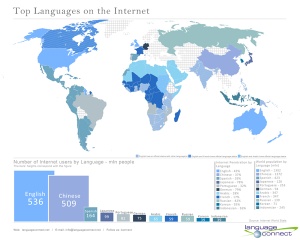We live in an increasingly globalized world – that much is certain. But what does globalization really mean and is it a helpful or harmful aspect of socio-economic revolution?
What is globalization?
Globalization can be defined as:
The process of international integration arising from the interchange of world views, products, ideas and culture. It refers to processes that promote world-wide exchanges of national and cultural resources.
These world-wide exchanges can include goods, services, finances, people, laws and even ideas. Advances in transportation and telecommunications, including the growth of the internet have harvested increased interdependence of economic activities. Globalization demands not only economic consideration, but political, cultural, psychological and ecological attention too.
Globalization as a harmful notion
With much heated debate as of late as to whether the effects of increased cross-border interactions is good or bad, and more importantly, who it affects positively and negatively, it seems neither supporters nor opponents accept or reject it in totality.
Different stakeholders and third party perspectives will defend divergent pro and anti-globalization opinions. The competing transnational flow of resources can be controlled in line with the competing interests of those involved.
Neoliberal globalization emerged in 1980 in reaction to the increasing powers of government and contracting commercial profits. It is generally argued that neoliberal globalization benefits the rich and harms developing countries.
We must acknowledge that world distribution of wealth and income is highly unequal. The richest 10% of households in the world have as much yearly income as the bottom 90 %. (BBC)
Globalization contributes to greater income inequality. Neoliberalist’s are often portrayed as opportunists – interested in personal gain through extortion of third world resources. Neoliberalism advocates the flow of capital that results from global trade but opposes increased immigration, which inadvertently positions poorer countries as ‘victims’ of financial imperialism.
The rise in underground globalization (involving the illegal flow of resources) is indicative of an absence of governmental control, legality and morality; supporting the perception that rich countries are looking to ‘ignore the rules’ at the expense of poorer people.
On the other hand, if we expand on this further and consider the number of jobs dependent on foreign direct investment and international trade, perhaps globalization isn’t all bad.
The helpful face of globalization
Foreign aid is also a contributor to globalization. It is a concept made up of national policies dedicated to the encouragement of long term investments and export markets for goods and labour, with a focus on relationship building for mutual benefit and equality. Foreign aid opposes unfettered trade, capital flows and overall Western cultural hegemony in support of greater global regulation and the flow of support and technology to poor countries, and of migrants to rich countries.
Issues surrounding this ‘positive attribute’ are that global demand can only support a limited number of countries, and there is a need for strong in-country policy governance which most developing countries cannot sustain.
To conclude
Globalisation will lead to a high similarity in different life spheres by definition. A homogenized global culture may not be a good thing as we lose cultures and traditions (see Suffering the loss of lingo).
Despite this, we cannot ignore the fact that globalization allows for greater specialization by nations, greater economies of scale and facilitates greater flow of information and technology. As a result, people and businesses are more competitive and arguably, more efficient.
Whether globalization is a good thing or a bad thing is up to you to decide, but it’s important to realize the effects on all members of the chain and the restraints involved in moving towards an ‘ideal balance’ in terms of equality and national capabilities.







